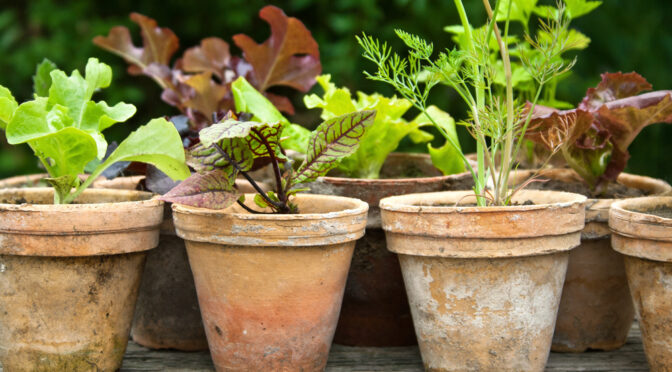In no way is growing your own food a bad idea. Pick your soil and seeds carefully and BAM! You have food the way food was meant to be. Great for your health beacuse you by pass the grueling game of GMO’s and pesticides, growing your own food spells health in more subtle ways as well.
Gardening has been shown to increase life spans, fight arthritis and a great way to get a little sun. The mindfulness that goes into on protecting and encouraging life spells wonders for one’s sense of compassion and appreciation for life. The result that speaks to me the loudest though is the flavor. I don’t care how cool your local farmer is, I grew a potato over my kitchen sink and it was a mind boggling medley of flavors.
Sounds great right? You’re probably ready to grow enough food for you and your block right? But like me you don’t even have a yard, so this dream will have to be shelved for another time… Well not today my agricultural dreamer. With a little compromise you can still grow the herb, fruits and veggies you hold dearest!
Before You Start
The strength a meal lies in its preperation. That intention of wholesome productivity can be traced to how its grown. Your local farmer’s market or grocery store will probably have the seeds you desire. If not the internet has got your back. Make sure your getting the strain you prefer and that it is GMO free. As you figure out what you wanna grow look into alternative growing methods. That potatoe I mentioned earlier was grown have submerged in water with no soil. I did add a nutrient blend to the water periodically.
Not every plant will need the same requirements. You might be able to double up plants in ceratin containment methods.
Start with five plant types and now mre than three of each (three tomato plants, three chive stalks, three garlic bulbs, three aloe vera plants, and three oregano plants as an example of the most you should start out with) I know you want to start growing eden in your living room but trust that a small scale increase on what you know you can mange will ensure you don’t kill anything and maximize your harvest.
Fruit Trees
These are great for beginners. Look up the deatils on espaliering, a growing technique for maximizing little spaces.
2. Kumquats
3. Avocados (plenty of extra tips online if you search)
4. Blackberries
5. Blueberries (sometimes helpful videos are available online)
6. Pomegranate
7. Cherries
8. Figs
9. Pears
Citrus Fruits
These plants can flourish indoors adding a nice decorative touch to your house or apartment.
10. Dwarf oranges
11. Grapefruit
12. Tangerines
13. Meyer lemons
14. Limes
Tropical Fruits
Bananas (look for container gardening tips online)
16. Pineapple
17. Papaya
18. Guavas (several varieties)
‘Neat’ Options
19. Hops—yes, as in the “spice” ingredient in beer. Turns out they’re easy to grow!
20. Aloe Vera
21. Strawberries
22. Tea (well, herbal tea)
23. Quinoa
Miscellaneous
24. Tomatoes
25. Summer squash
26. Other squashes, like acorn and pumpkin
27. Hot Peppers
28. Sweet peppers29. Cucumbers
Melons
30. Small cantaloupe
31. Jenny Lind melon (an heirloom cantaloupe)
Herbs
33. Basil
34. Oregano
35. Parsley
36. Rosemary
37. Chives
38. Catnip
39. Thyme
40. Sage
41. Parsley
Greens
42. Kale
43. Mesclun greens
44. Spinach
45. Swiss chard
46. Lettuces (plenty of options there, from micro-greens to head or loose-leaf)
47. Mustard greens
48. Collard greens
49. Arugula
Root Vegetables
50. Carrots
51. Beets
52. Potatoes
Healthy Options
53. Sprouts
54. More sprouts: mung bean and lentil sprouts
55. Wheatgrass
56. Kohlrabi
57. Turnips
58. Rutabagas
59. Celeriac
60. Parsnips
62. Sugar snap peas
63. Rhubarb (not ideal in a container, but it can work)
64. Mushrooms (again, more tips online if you look)
65. Pole Beans
66. asparagus

